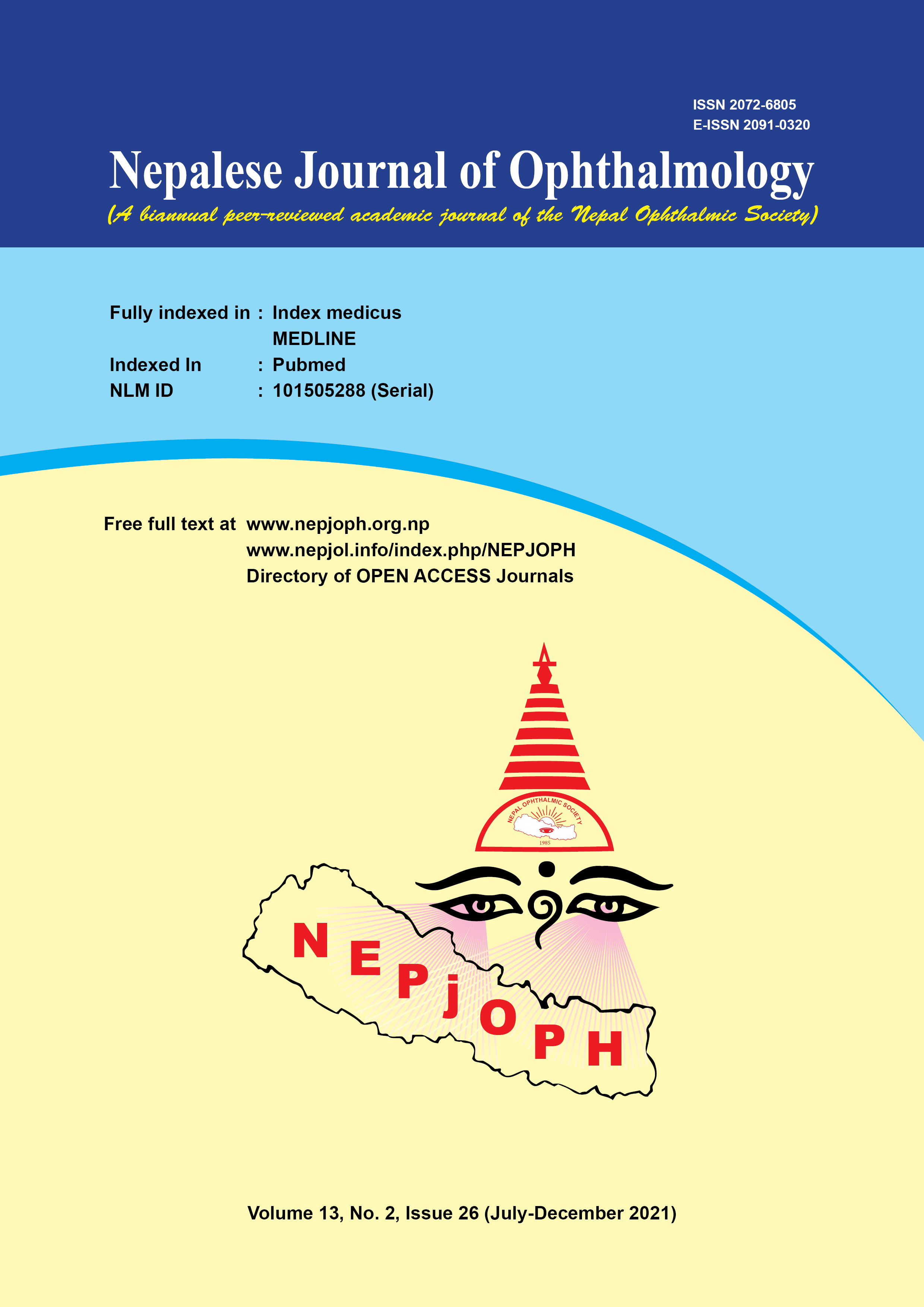Anatomical and Functional Success Analysis of Lacrimal Canalicular Lacerations Repaired with Bicanalicular Stents in a Tertiary Referral Teaching Center in Mexico
DOI:
https://doi.org/10.3126/nepjoph.v13i2.30079Keywords:
Bicanalicular stents, Canalicular intubation, Canalicular laceration, EpiphoraAbstract
Introduction: Functional and anatomical success after canalicular laceration repair using only Crawford bicanalicular stents was evaluated in a ophthalmological teaching center. The objective of this study was to evaluate functional and anatomical success after canalicular laceration repair using Crawford bicanalicular stents.
Materials and methods: Records of patients with canalicular laceration repair performed from 2010 to 2019 at Ophthalmology Institute Conde de Valenciana in Mexico City were reviewed. Demographic data, injury mechanism and complications were recorded. Anatomical success was assessed with canalicular irrigation and functional success was evaluated using Munk score. Phi correlation coefficient was used to compare the correlation between epiphora and lack of permeability of injured canaliculus and the presence of complications at 6th month postoperative visit.
Results: Two-hundred eight patients with lacrimal canalicular injury reconstruction were documented during the study period. The most common age of presentation and etiology was from 21 to 30 years old and injury with a sharp object, respectively. 96 patients were included for the correlation analysis. At 6th month, anatomical success was found in 75% and functional success was found in 77.8%. A statistically significant and directly proportional linear was found between the presence of epiphora and lack of permeability of injured canaliculus, (rφ 0.76, p <0.05) and between the presence of epiphora and postoperative complications, (rφ 0.509, p <0.05).
Conclusion: Crawford bicanalicular stents are a valid and accessible option for canalicular laceration repair. Our success rate of lacrimal canalicular lacerations repaired with bicanalicular stents in a Mexican teaching hospital matches worldwide literature. Factors involved in the functional and anatomical success of the reconstruction include presence of postoperative complications and permeability of canaliculus after surgery.
Downloads
Downloads
Published
How to Cite
Issue
Section
License
Copyright (c) 2021 Nepalese Journal of Ophthalmology

This work is licensed under a Creative Commons Attribution-NonCommercial-NoDerivatives 4.0 International License.
This license enables reusers to copy and distribute the material in any medium or format in unadapted form only, for noncommercial purposes only, and only so long as attribution is given to the creator.




